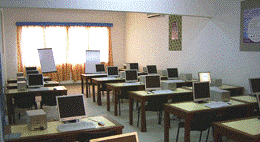
| Education System in Congo, Republic of the |
The Republic of the Congo has been in a constitutional crisis for decades, and its education system has not been unaffected. What follows here is a blend of what used to be and what is hoped for in the future, as opposed to a blow-by-blow account of the current situation. Primary schooling, for which children enroll for from age 5.5 onwards, lasts 6 years. These are divided into 3 equal phases, namely preparatory, elementary and medium. At the conclusion of the medium phase, learners must pass a secondary school test before they may study further.
Secondary education takes a further 7 years, of which the first 4 are spent at college following a standard academic curriculum, whereafter students sit for their general certificate of secondary education.
The final 3 years of school education take place at lycées. While the general certificate of education is sufficient for going on to general lycées, agricultural and technical ones apply special tests. The curriculums at technical lycées include choices between architecture, engineering and mechanics.
The economy in the Republic of the Congo is in a shambles, with many factories destroyed and child soldiers walking streets in search of anything to do. What job-related training does take place is informal, and employer specific too. International aid agencies are trying to assist.
 Tertiary education institutions include the Christian Polytechnic & Professional Institute of Arts, the Institute of Business & Economic Development, the Mondongo Higher Institute of Agricultural Sciences, and Marien Ngouabi University.
Tertiary education institutions include the Christian Polytechnic & Professional Institute of Arts, the Institute of Business & Economic Development, the Mondongo Higher Institute of Agricultural Sciences, and Marien Ngouabi University.
The latter was founded in 1971 as the University of Brazzaville, and re-named a few years later after an assassinated president. In its heyday it produced a wide variety of graduates. Its current status is uncertain.